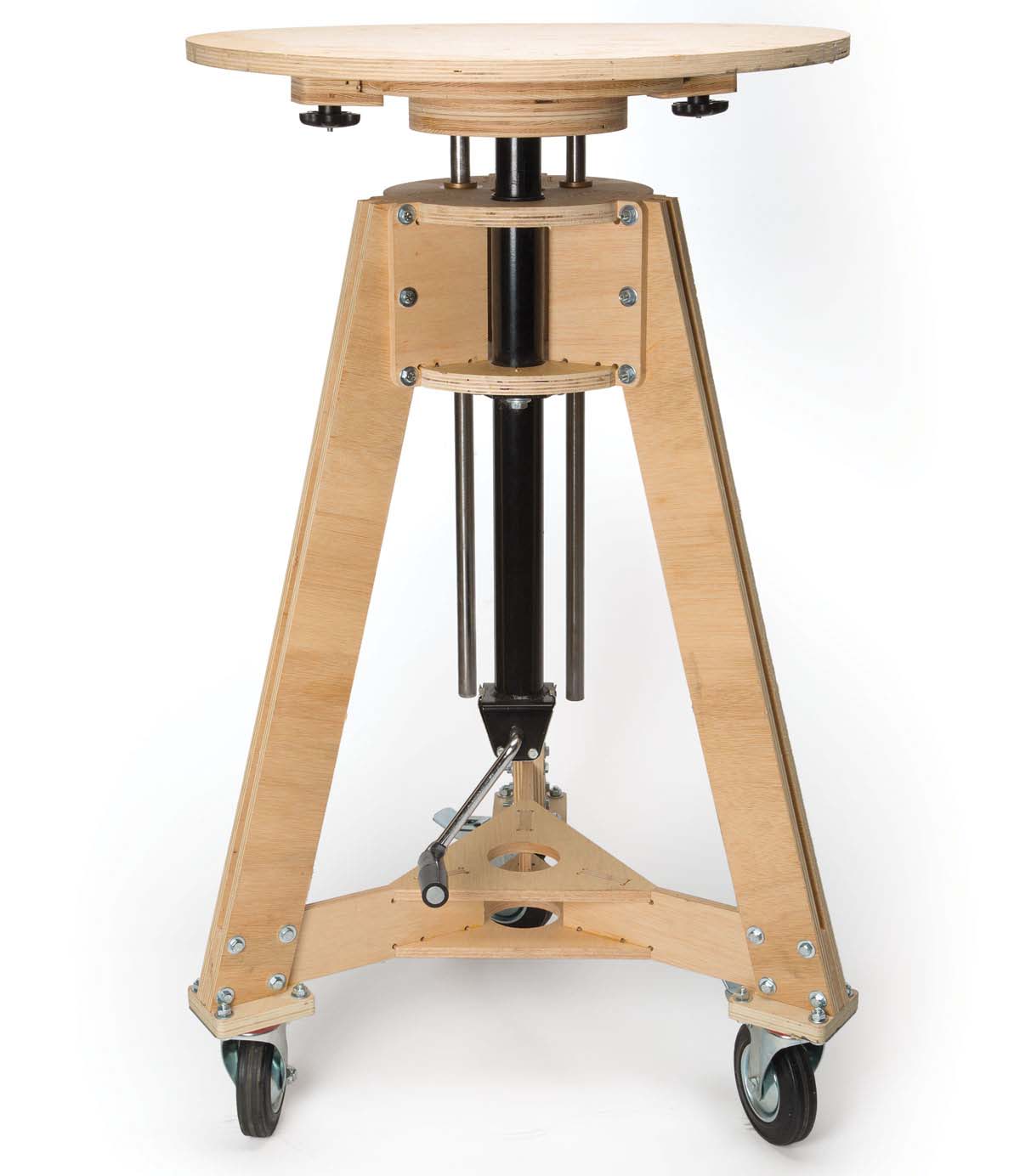
Don’t have this issue? Get it in the Maker Shed.
My boss is an avid sculptor who likes to re-create characters and monsters from various games and comics. He wanted to get a new professional modeling table but didn’t want to pay the $800 price tag. So he asked me if I could make one for less than $200.
I did, and I used a boat hitch jack to do it. The trick to a modeling table is that you can raise and lower the table surface, giving you better access to the underparts of your model when it’s raised, and a more comfortable working position when it’s lowered. This one’s got 15″ of vertical travel. Additionally, the tabletop needs to spin, and to support 200lbs — clay is not a light material.
I designed the parts in 3D in Autodesk Inventor, then laid them out in AutoCAD as 2D parts for cutting on a CNC router. You can download them for your CNC or cut them by hand. To finish it off, I added big 5″ caster wheels to the base so the boss can roll it around his cramped and messy shop without getting tripped up by stray clay stuck to the floor.





